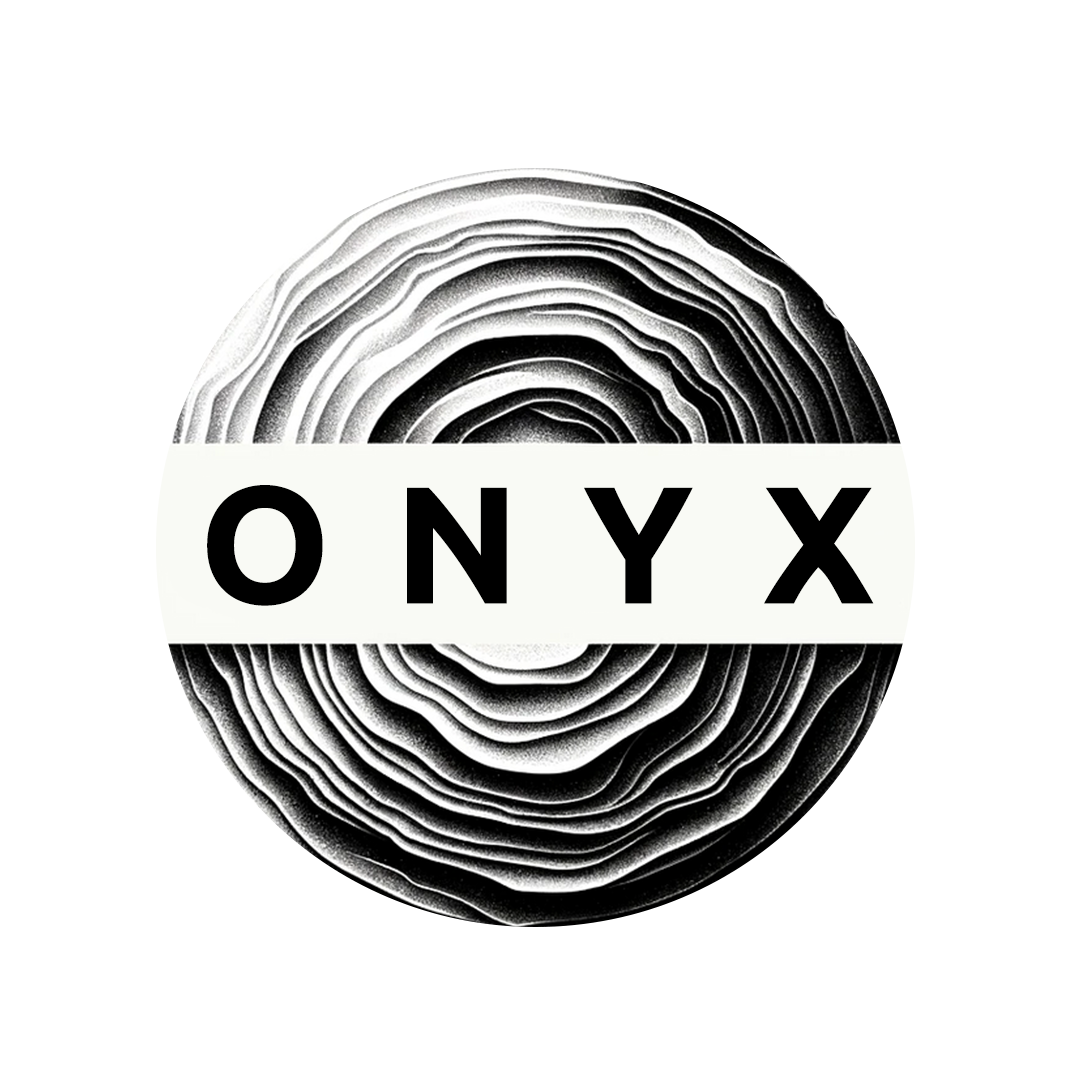Table of Contents
Shashi Shankar, CEO of Novellia, sat down with Onyx for a feature-length interview.
Could you explain to our readers the scale of the problem you’re addressing and the solution you’ve put to market? How did Novellia come about, and what led you to this?
My story starts with my immigrant roots. My parents came over from India in the early eighties—a huge risk that meant leaving everything behind for a better life in America. Growing up as a kid of immigrants, I was constantly advised: “don’t take any risks; de-risk everything you can. Go to a good university, get a steady job.” Naturally, I followed that advice. After graduate school, I was recruited by Genentech and later by Roche to work at their U.S. headquarters in San Francisco. Over time, I took on a bunch of different roles: medical affairs, real-world data analysis, health economics, and eventually I moved into sales and marketing. My last role was with Roche in Basel, where I helped launch their global digital health technologies group—looking back, I was on a smooth, low-risk career path.
But then two things happened that turned my thinking upside down. The first was professional. In my new role leading global digital health, I started reading extensively about emerging tech trends in the U.S. One article, in particular, caught my attention—it discussed the 21st Century Cures Act.
Essentially, the Act grants every American an unfettered right to access all their medical records. This seemed revolutionary to me. Despite the massive amount of clinical data patients generate each year, from my experience in the industry, I knew that in its current form that data was painfully fragmented and scattered around everywhere. I thought, “If patients could access and share their own health records, researchers could finally compile true, longitudinal data.”
The second part of my story is deeply personal. My grandfather—one of my closest friends and a hero in my eyes—was diagnosed unexpectedly with gastroesophageal cancer. In just four intense months, he battled through multiple specialists and care settings, yet no one had a single, consolidated record of his medical history. That fragmentation wasn’t just a technical shortfall—it was a profound failure of our healthcare system. Experiencing that loss, I felt compelled to create a solution that not only advanced research but also offered patients one clear source of truth about their own health.
In America today, every patient generates massive amounts of clinical data—think how a cancer patient's medical record can hold more than 100 terabytes of data1—but the data is scattered across different systems, formats, and languages. There’s no single source of truth. Our radical thesis at Novellia is that the only way to build that unified record is to work directly with patients.
We’ve designed a platform where patients can sign up in about a minute and a half.
Once they accept our terms and conditions and authorize data access, we pull their records from numerous health systems. Behind the scenes, our backend is integrated with nearly every major hospital EMR, health system, and local clinics in the US. When a patient ‘flicks the switch,’ everything from their lab results to medication histories is consolidated in real-time. It’s not just about aggregating data; it’s about creating a continuously updated, holistic profile that reflects all the historical and current health info on record.
That’s an impressive feat of integration. Beyond simply gathering data, what do you see as Novellia’s main competitive advantage, especially given how messy healthcare data can be and the competition in this market?
There are two major challenges. First is the sheer technical hurdle of integrating data from such a vast array of sources. And second, once you have that data, making sense of it is incredibly difficult. Healthcare data—even in its “clean” form— can be hard to decipher.
We’ve tackled this by building a robust custom rules engine and an automated pipeline that does three things.
One, it pulls data in from diverse sources.
Two, it normalizes and de-duplicates the data so that all records are consolidated into a single, coherent profile.
Three, it categorizes the information — linking medication histories to encounters, correlating lab results with clinical visits, and so on.
This systematic approach not only cleans the data but also transforms it into actionable insights. It’s this level of precision and processing that really sets us apart.
You mentioned regulation earlier and the 21st Century Cures Act. How have you found it to navigate the new regulatory landscape and how much does it affect these integrations?
We’ve found the regulatory changes were both enabling and challenging. On one hand, the Act allowed us to build the technology we needed—by mandating that patients have full access to their records, it provided the green light for digital integration. On the other hand, even now in 2025, some health systems may still resist providing access for various reasons. We’ve moved entirely away from paper forms or fax requests; everything is digitized.
I have to give a lot of credit to our CTO, my co-founder—the real brains behind cracking the data unification puzzle. We spent nearly the entire first year of our operation figuring out how to onboard patients securely and ensure that locating and adding health records was as simple and seamless for patients as any standard consumer experience. It was a painstaking process, but it’s what makes our system robust and reliable today.
So, who actually pays for access to the platform? How does the business model work?
Patients never pay a penny.
We believe it’s a fundamental right for individuals to know what’s going on with their own health without any financial burden. Instead, our revenue comes from life science companies.
These companies use our data to understand the patient experience—from treatment efficacy to adverse events—continuously up-to-date. In essence, while patients get free, comprehensive access to their medical records, our customers gain unparalleled, high-quality insights that help guide research, regulatory decisions, and product development.
As a doctor, I’ve seen for myself how challenging it can be when the patient data you need hasn’t been stored in the right place. A patient’s record might be available at one hospital but completely missing when they visit a different hospital. Does Novellia’s platform do anything for doctors?
Yes, it does. Although our initial focus has been on the life sciences industry, we believe our system has clear applications for clinical practice too. We’re already collaborating with several organizations, including NCI-designated cancer centers. For instance, oncologists can quickly see whether a patient has ever had a biomarker test or track their treatment history across multiple providers.
While we haven’t yet launched a formal clinical decision support tool, the underlying value is evident. Our platform is inherently flexible and has the potential to support providers, regulators, and even patient organizations—all by serving as that singular, unified source of truth.
And for biotechs and biopharma companies, the key benefit is that they obtain both retrospective and prospective data, right?
Exactly. There are three primary benefits for pharmaceutical companies. First, completeness. When a patient signs up, we link all their data across time and across care settings—from visits to a community oncologist to consultations with a primary care physician. This ensures not only a historical record but also continuous, prospective updates.
Second, there’s precision. Traditional databases are often huge and expensive, yet when filtered down based on specific inclusion and exclusion criteria, you might end up with only a handful of patients. That’s neither generalizable nor cost-effective, especially for smaller biotechs. Our system delivers a hyper-precise, well-filtered dataset that truly reflects the patient experience.
Third, we enable bi-directional communication. It’s not enough to simply provide data. Many life science companies want to engage with patients through electronic patient-reported outcomes (ePRO) surveys, symptom trackers, and medication adherence tools. Existing solutions usually have no direct connection to patients—so they can’t ask follow-up questions or gauge real-world outcomes as effectively. Our platform fills that gap by offering a direct line to the patient, which enriches the data further.
In building out this platform, who have been your key strategic partners?
We’ve aligned with three major groups. First, life science companies. Early on, after chatting with early adopters, we noticed patients wanted to actively engage with the product, to do things like review their lab results and explore their records. Discussing this observation with our life science partners spurred us to develop features like ePROs, tailored to pharma’s needs. On the customer side, the majority of our clients are among the top 10 to 15 global biopharma companies, with a few smaller biotechs also on board.
The second group is healthcare providers. By partnering with institutions like NCI-designated cancer centers, we gained crucial insights into where and how patient data is stored across different systems. These collaborations have been vital in understanding the real-world landscape of healthcare data.
The third — and perhaps most important group — is the patients themselves. We have a dedicated team that reaches out to users, gathers feedback on experimental features, and ensures that the platform remains truly patient-centric. Their input helps us refine every aspect of the platform, ensuring that it’s not only technologically robust but also aligned with the needs of the people at its center. On the patient side, we currently serve thousands of engaged users.
Our approach isn’t about rapid aggregation for the sake of numbers; instead, we focus on building deep, high-quality profiles for each patient. We’d rather build a comprehensive, accurate record brick by brick than collect a massive, yet shallow, dataset.
Given how fast AI is advancing and personalized medicine is gaining momentum, are there any specific data sets or metrics you’d like to integrate over the next few years?
Oh, definitely. Right now, we focus primarily on EMR data—both structured and unstructured—which means our median number of health records per patient is around 4,600.
But our next frontier is expanding the data surface area even further. For example, integrating insurance data could be interesting. In America, the average adult switches insurance roughly every 18 months—even within the same employer’s offerings—so capturing that information could provide a fuller picture of a patient’s financial and healthcare journey.
We’re also very interested in genomic data. Genomic insights, combined with EMR data, have the potential to revolutionize personalized medicine. With the help of advanced AI, we could start drawing precise inferences about patient outcomes by analyzing correlations between genomic profiles, clinical histories, and even insurance data.
Imagine a future where a comprehensive dataset powered by AI informs not just drug development but also tailored treatment plans based on millions of data points. That’s the direction we’re headed.
That is truly forward-thinking. Now, switching gears a bit—there’s a rumor about your hip-hop album. Could you tell us a bit about that creative venture?
(Laughs) Yes, that’s true. I actually grew up as a trained percussionist. While my parents nudged me toward the piano, I fell in love with drums and rhythm. In high school, I got my hands on a copy of Logic Pro for my little Mac Mini and started experimenting with a mini keyboard.
In college, I teamed up with some incredibly talented rappers and convinced a professor to let me do an independent study. I produced an album and released it on SoundCloud under a pen name—which will always stay private!
It’s a chapter in my life that shows how creativity can flourish even in the midst of a rigorous career. My passion for percussion still influences my approach to business—both require a keen sense of timing and creative flair.
That definitely adds a unique dimension to your profile as a tech CEO. Do you still keep up with music production?
Not nearly as much as before. I still have my mini keyboard plugged in somewhere, but my set of skis has gathered dust for over two years now, and my acoustic guitar is probably way out of tune. I’d love to get back into it someday, though.
It’s fascinating how many CEO founders have creative sides. It seems that creative energy often informs their approach to solving complex problems in business.
Exactly. I’ve met many CEO founders who share that blend of scientific rigor and creative passion. It’s that natural, inherent curiosity to create that drives us to innovate—whether in developing a ground-breaking healthcare platform or producing a hip-hop album.
Before we wrap up, is there anything else you’d like to add?
Just a final thought: when you know what you’re aiming for, and you never compromise on that vision, there’s always a way to build something transformative. Our approach at Novellia is radically different from traditional data companies. It isn’t just about collecting data from various hospitals or disparate systems—it’s about working directly with patients, respecting them, and ensuring they derive real value from their own medical records. It takes a village to build this kind of comprehensive data ecosystem.
We truly believe that by coming together, we can solve even the toughest issues in healthcare data and have already shown what's possible with leading companies across the industry. I'd invite anyone working in life sciences to read more about our work on our website (novellia.com) and to reach out to explore how our unique approach to real-world data can dramatically amplify the impact of your therapeutics.

1 Source. "Cancer patients’ medical records can often comprise up to 100 terabytes of individual — and usually very heterogeneous — data, including blood and tumor values, personal indicators, sequencing and treatment data..."








